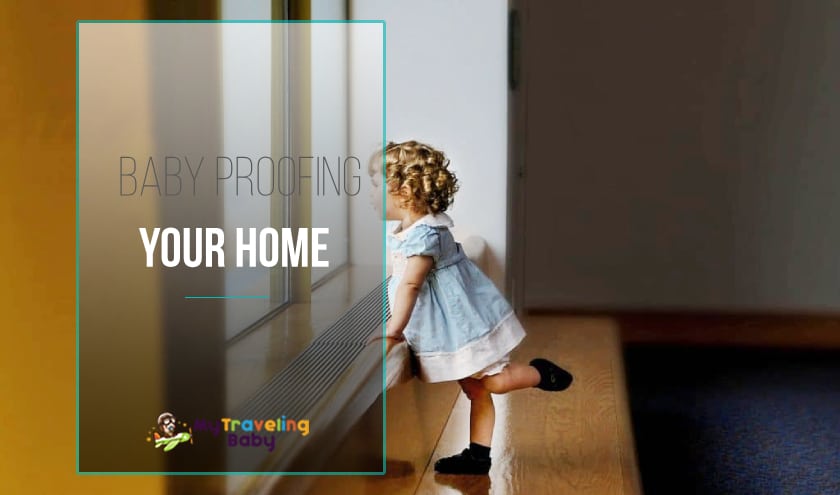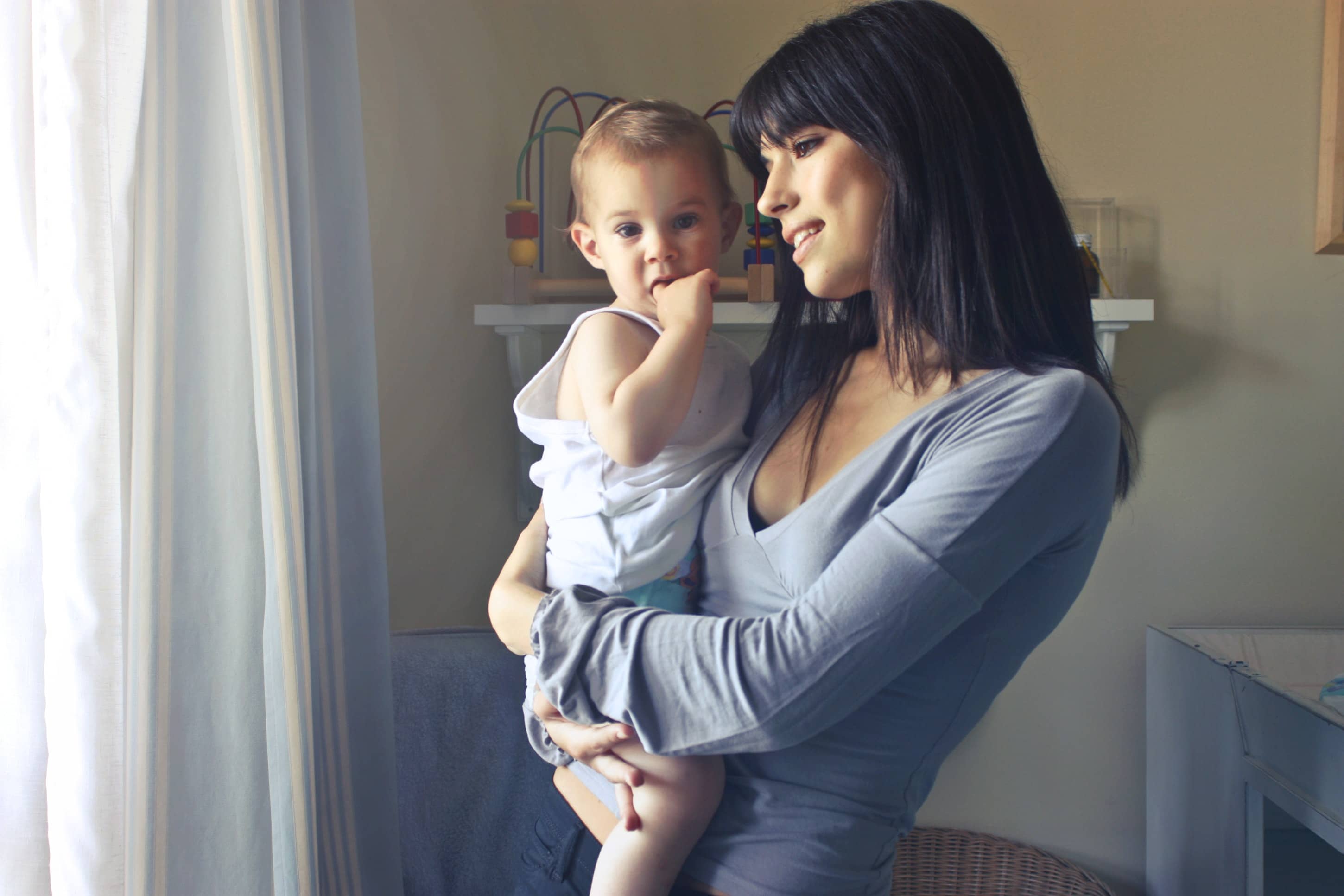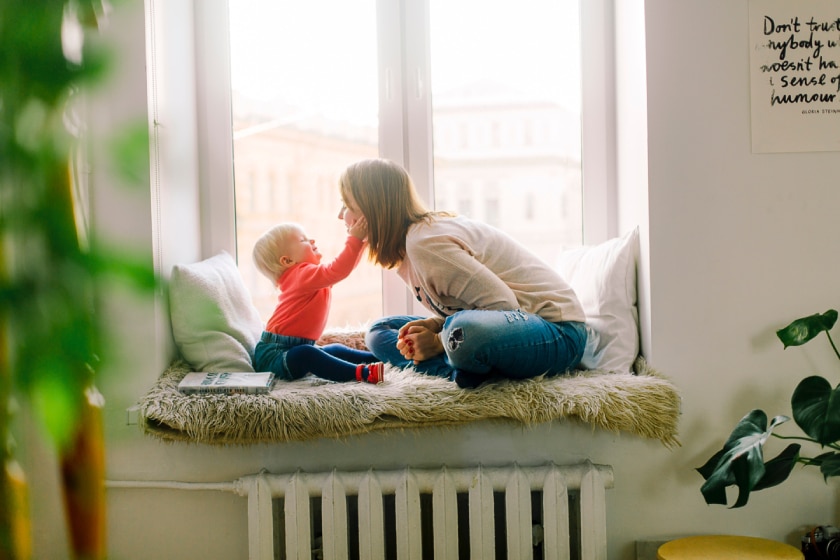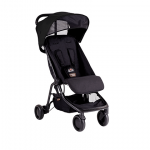
When you first bring your child home from the hospital, babyproofing probably won’t be the first thing on your mind. How could it be? The little one hasn’t yet learned to crawl.
However, before your little one starts cruising around the house on their own, it’s important to baby proof your home. It’s a fairly new verb, so you might be wondering, how to do that?
Well, no matter how hard you try, there’s no way you can make sure your house is perfectly safe. The purpose is to minimize the number of potential risks posed to your child’s safety. Once you’re done ticking off items on your checklist, you’ll have more time to enjoy the activities you like, without a worry in sight.
Why Baby Proof?
An average contains some very real safety hazards, and every loving family should take them seriously. Making sure window blind cords and open electrical sockets are in check, is as important as infant car seats are.
There are some other, minor, hazards, such as table edges or open trash cans, that, although less serious, are still worth addressing. No matter which lengths you decide to go to, parental vigilance is vital in ensuring your child’s safety.
Babyproofing Checklist
1. Baby Proofing for a Crawling Infant (6 to 10 months)
When babyproofing your home for a little crawler, it’s only natural to start by getting down, literally. Yes, it does sound a bit funny, but it allows you to have a better overview of the hazards that could possibly be overlooked while you are standing. So what might one discover to be a threat down there?
Electrical Outlets
When your child gains the ability to crawl and sit up, you will realize how easy it is for them to reach the electrical outlets. Thankfully, baby proofing electrical sockets is reasonably easy. You can use standard, cheap socket covers for outlets that are not in use.
Outlets that are in function are a risk as well, as the baby might work the plug out enough to get in a harmful situation. Positioning furniture in front of those outlets is the best solution.
However, that’s not always practical. For such inconvenient spots, consider purchasing a baby proof kit that has baby-resistant outlet covers.
Stairs
If you have stairs in your house, safety gates are crucial for your child’s safety. You’re in luck, because, infant gates no longer resemble ugly, plastic prison bars. Many baby proofing kits have steel baby gates that are very stylish and user-friendly.
When it comes to the top of the stairs, your best option is a hardware-mounted system. If you want to go further, you can get a banister guard.
Although kids typically can’t fit between the rails, they can get their hands or legs stuck. The guards also keep their parents safe, as they make it hard for children to throw stuff at them through the rails.
Fireplace
This is one item that should be high on your babyproofing checklist. Naturally, you will be really careful when a fire is burning and place a fireplace screen. But still, hearths can be dangerous even when they’re not in use.
If you have an elevated hearth made of brick or stone, it would be best to get some edge and corner guards. Fireplace tools and lighting devices ought to be stored out of the child’s reach.
Cabinets and Drawers
Babyproofing cabinets is easy work thanks to magnetic locking systems. You can use them on drawers as well. You don’t need secure all of them, though.
Plenty of parents like to keep one kitchen cabinet “non-babyproofed” and store harmless kitchen items inside them. You wouldn’t want to miss out on your baby’s pot and pan percussion performance!
Pools
Having a pool in the backyard is lovely, but it also requires some additional precautions. A pool alarm goes off whenever someone or something falls into the pool. Covering the pool when it’s not in use is also a good idea.
If you feel like you’ll need some extra safety steps, there are a few other things you can do too. For example, get a pool gate alarm or for any door that leads to the pool.
2. Baby Proofing for a Cruising Infant (8 to 11 months)
A day will come when you will discover that your child has moved on from crawling to cruising. It’s the time when your child is able to pull themselves up and hold on to the furniture – it’s the last step before an infant starts walking. Once your little one begins cruising, you’ll have to step up your childproofing game.
Coffee Tables
The average coffee table height is ideal for cruising. However, coffee tables typically have sharp edges and corners. When a baby is learning to cruise, there’s a lot of falling involved.
The chances of your baby bumping their head into a coffee table are quite high. Some parents stove away their coffee tables during that period. Another option would be using round tables instead or installing some edge and corner guards.
Window Blinds
Regular window blinds and shades that have long cords also pose a threat. If your house has oldfashioned blinds, you could cut the cords and install window blind tassels. They are an excellent choice as they break under pressure.
An even better idea would be buying cordless blinds and shades. At first, you can buy some that are very pocket-friendly, and gradually start replacing them with nicer ones.
Trash Cans
Typically, one doesn’t consider trash cans to be a threat to a child’s wellbeing, but they do contain all kinds of disgusting stuff. If you have regular trash cans, it would be wise to replace them with ones that have sliding locks. They are not only safer for the children, but they also keep out the family dog.
The other solution is practicing safe waste disposal. You can put a can lid inside the trash can. Before throwing away glass, put it in a container.
Also, empty the garbage can before it becomes full. A full garbage can is quite tempting to the little ones and poses a significant safety hazard.
Tipping Hazards
Secure furniture that has a heavy top. You can do that by securing it to the wall using safety straps. Bookcases and chests of drawers are such potentially hazardous furniture. Any piece of furniture on top of which your baby can climb on is a significant threat to their safety.
A TV set can also be a tip-over hazard. Admittedly, the lighter LCD models are safer than, the older TV sets.
A television set that’s mounted on a wall ought to be fine. However, if your television set is free-standing, consider babyproofing it using safety straps.
Bathroom Hazards
Wherever there is water, drowning is a concern. As soon as you finish the bath, drain the bathtub. Using a toilet lock can also help keep your baby safe. Accidental drowning is known to occur when an infant falls into a toilet head first.
More Bathroom Safety
A slip-resistant, non-toxic mat is another way you can babyproof your bathtub. As the bathtub faucet is typically positioned right at an infant’s head level, it also poses a safety risk.
You can protect your baby’s little head with a faucet cover. Even though it doesn’t look pretty, using rugs on the bathroom floor to soak up spills can prevent slipping.
3. Baby Proofing for a Waling Child (8 to 16 months)
Nothing is cuter than a toddler, and it is quite impressive how fast they can go once they have learned to walk. But a baby that walks more often than not likes to climb.
Windows and Doors
This is the period when your child might turn into an escape artist. Doorknob safety covers prevent children from opening them. There are also window guards and locks.
You can also get a useful stop that allows the window to open only a few inches. A door stopper can keep the door from slamming on their little fingers.
Medication
Medicine packages are child-resistant, but not childproof. There are specific rules in labeling such packages child-resistant. For example, if less than 20% of babies in a sample test group can open a medication package within ten minutes, it is considered child-resistant.
To be safe, it’s best to assume your baby would be in the 20%. So, keep your medicine out of reach, or, even better, use a locking medicine cabinet.
Corners and Edges
Your average toddler is about the right height to be at risk of hitting their head on sharp table and cabinet corners. You can’t wrap your kiddo in bubble wrap, but you can utilize corner guards where they are most useful.
Personalizing Your Babyproofing Strategy
Each home is different, and each parent has their own babyproofing method. Some parents want to neutralize every single hazard, while others are concerned only about the major ones.
When it comes to childproofing, a lot of things depend on your personality. Some people are more risk-averse compared to others.
Another critical factor is your baby’s personality. It can have an impact on the childproofing process. A relaxed, tranquil baby does not deem as many safeguards as a proactive, curious child might need.
Your house also plays a role. Some houses contain more significant hazards than others. Features such as low windows, hard floors, and split levels are no good.
Teaching Safety
Instead of padding your entire house, it might be good to slow down a bit and convert your babyproofing strategy in a teachable moment. Even if your child might not understand all of it quite clearly, it’s never too soon to teach your little one about safety.
Your smallest child might not be your only child in your home. Older kids should be taught to keep toys with smaller pieced away from their younger siblings. You can also teach them to keep their toys and footwear out of walkways and off the stairs – a habit that’s great to have when grandma and grandpa come over for a visit.
Parents are typically a bit younger and can easily avoid obstacles, but the grandparents might not be so agile. Although no home can be 100% childproof, every home can be child-friendly. And such a home is one where great safety practices occur, and the majority of hazards are neutralized.
Conclusion
At the end of the day, your parental guidance and focus are the best defense against the dangers lurking around the corner. The more present you are with your baby and aware of their location, it will be easier to baby proof house.
Every parent gets distracted, and every parent needs a moment to relax. If you have some urgent business to take care of, find a reliable friend who can step in. Another thing you could to – place your child in a safe space with toys while you unwind, but make sure your baby is always in sight.
Honor your self-time. It will keep everyone safe and sane. A safe home is a healthy home – it doesn’t also make sure your baby is safe, but it also gives you peace of mind.





